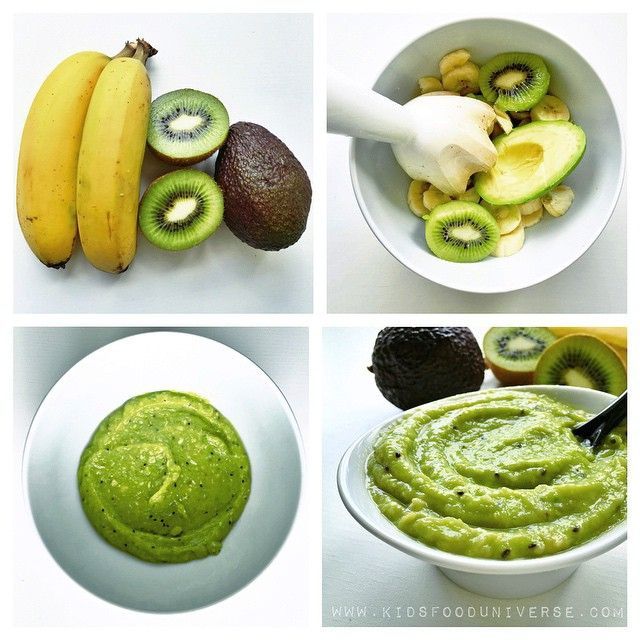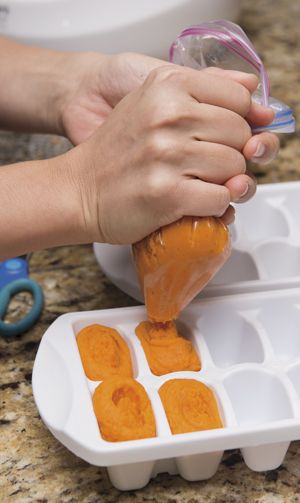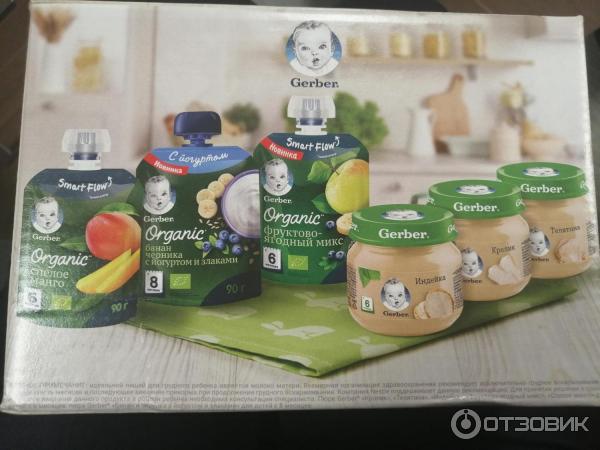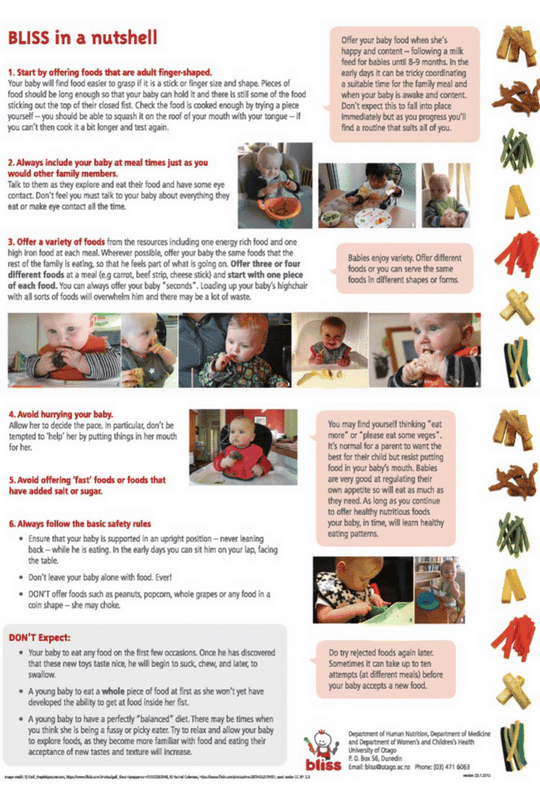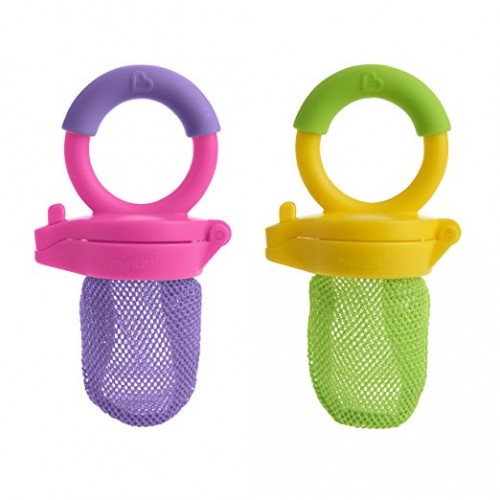Is avocado a good first food for baby
Avocados for Babies - How to Introduce Avocado to Babies
When can babies eat avocado?
Avocado can be introduced as soon as baby is ready to start solids, which is generally around 6 months of age. Ripe avocados are soft and loaded with nutrients, making them a wonderful first food.
Baby just starting solids? Our guides have got you covered, from introducing allergens to breakfast ideas.
Background and origins of avocado
Avocado originates in Mesoamerica, where it was prepared and eaten by the Aztecs in a variety of forms, including the now-world-famous guacamole (originally called ahuaca-mulli). Colonizers brought the crop back to Europe with them, and it has since spread across the globe. While the avocado is most often thought of in relation to savory Mexican and other Central American dishes, other cultures have adapted the strange-looking fruit to different uses. These include the Indonesian drink called jus alpukat, a cold blend of avocado and coffee, and a simple dessert that marries avocado, ice, and condensed milk (or milk and sugar) found throughout Asia, from the Philippines to Vietnam.
★Tip: That beautiful bright green avocado flesh is notorious for turning brown after being exposed to the air. While not harmful, you can prevent this by adding something acidic (such as lime or lemon juice) or by wrapping the avocado in a plastic film.
Is avocado healthy for babies?
Yes. Avocado is a popular first food for babies, and it’s easy to understand why. The fruit is easy to prepare and rich in fiber and the healthy fats that babies need to support digestion and brain development.1 Avocados are also a rich source of growth-supportive B-vitamins like folate and B6, and contain vitamin E as well as zinc to fuel immune health. The healthy fats in avocado also make it a good oil option, though occasional use may be preferred because it tends to be expensive.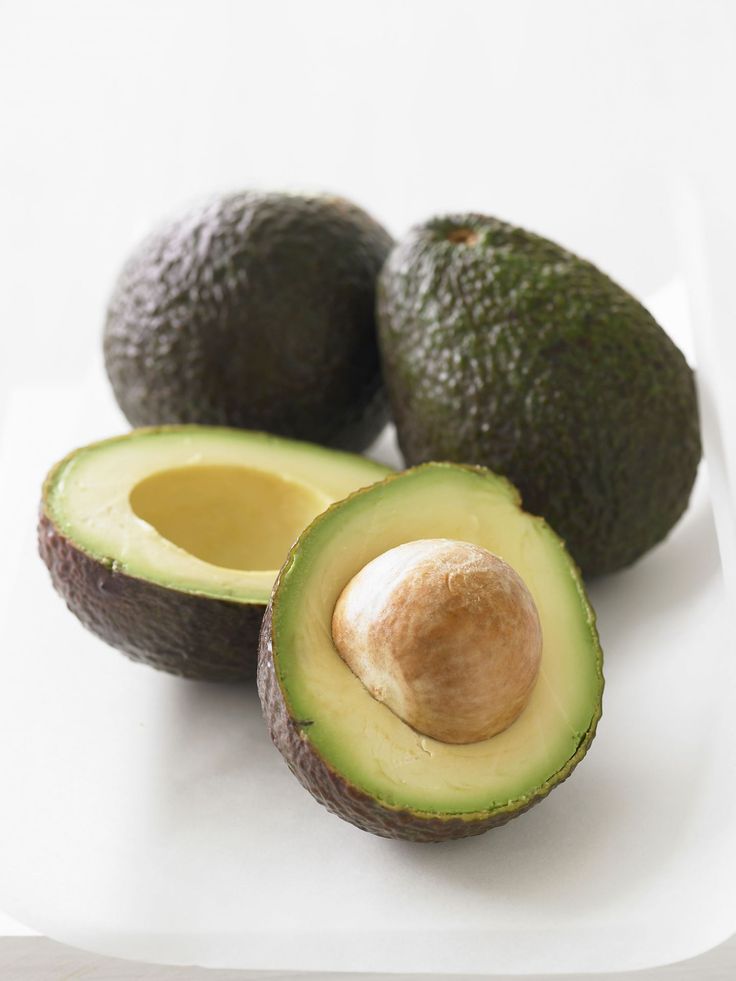
When shopping for avocados, you may notice large, smooth-skinned varieties along with the smaller, rough-skinned Hass avocados. Avocados share a similar nutrient profile, though the larger, green-skinned varieties contain slightly less fat and are therefore sometimes marketed as “lite” avocados.2 Regardless of variety, select avocados that don’t have any bruising and feel slightly soft when gently squeezed.
★Tip: Avocados start to ripen once they’re picked from their tree. If you need a rock-hard avocado to ripen quickly, place it in a brown paper bag with an apple or banana, which will release ethylene gas that speeds up the ripening process. Conversely, if you have an avocado that is already ripe that you need to keep for a little longer, popping it in the refrigerator will slow the ripening process.
Is avocado a common choking hazard for babies?
No. When ripe, avocados are not a common choking hazard, though in theory an individual can choke on any food.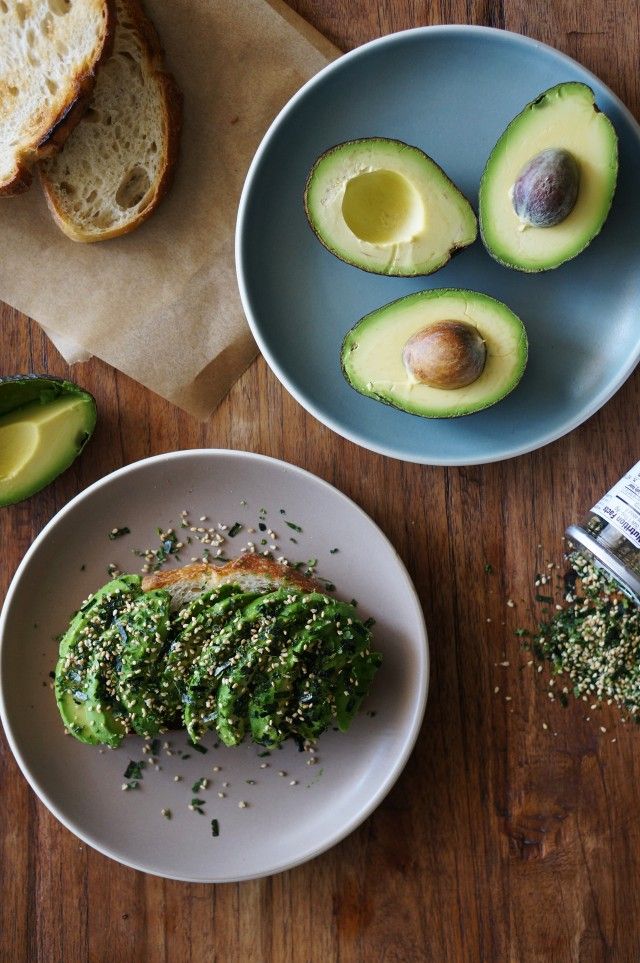 As always, make sure you create a safe eating environment and stay within an arm’s reach of baby during meals.
As always, make sure you create a safe eating environment and stay within an arm’s reach of baby during meals.
For more information on choking, visit our sections on gagging and choking and familiarize yourself with the list of common choking hazards.
Is avocado a common allergen?
No. Allergies to avocado are rare but have been reported.3 Avocado allergy is more likely to occur in individuals who are already allergic to banana, chestnut, or kiwi and those who are allergic to latex or certain pollens may be allergic to avocado or experience Oral Allergy Syndrome (also known as pollen-food allergy).4 5 Oral Allergy Syndrome typically results in short-lived itching or burning in the mouth and is unlikely to result in a dangerous reaction. Avocado is a possible trigger for food protein-induced enterocolitis, also known as FPIES. There is emerging evidence that the prevalence of avocado as a trigger for FPIES is higher than originally believed.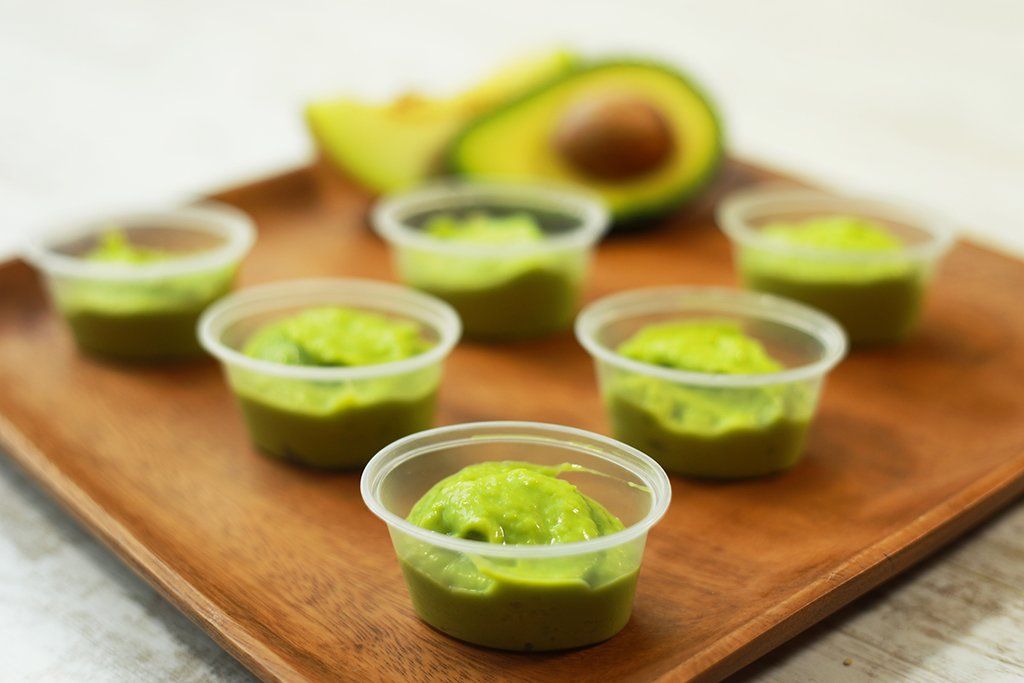 6 FPIES is a delayed allergy to food protein which causes the sudden onset of repetitive vomiting and diarrhea to begin a few hours after ingestion.
6 FPIES is a delayed allergy to food protein which causes the sudden onset of repetitive vomiting and diarrhea to begin a few hours after ingestion.
As you would when introducing any new food, start by offering a small quantity for the first few servings. If there is no adverse reaction, gradually increase the quantity over future meals.
How do you prepare avocado for babies with baby-led weaning?
Every baby develops on their own timeline, and the suggestions on how to cut or prepare particular foods are generalizations for a broad audience. Your child is an individual and may have needs or considerations beyond generally accepted practices. In determining the recommendations for size and shape of foods, we use the best available scientific information regarding gross, fine, and oral motor development to minimize choking risk. The preparation suggestions we offer are for informational purposes only and are not a substitute for child-specific, one-on-one advice from your pediatric medical or health professional or provider.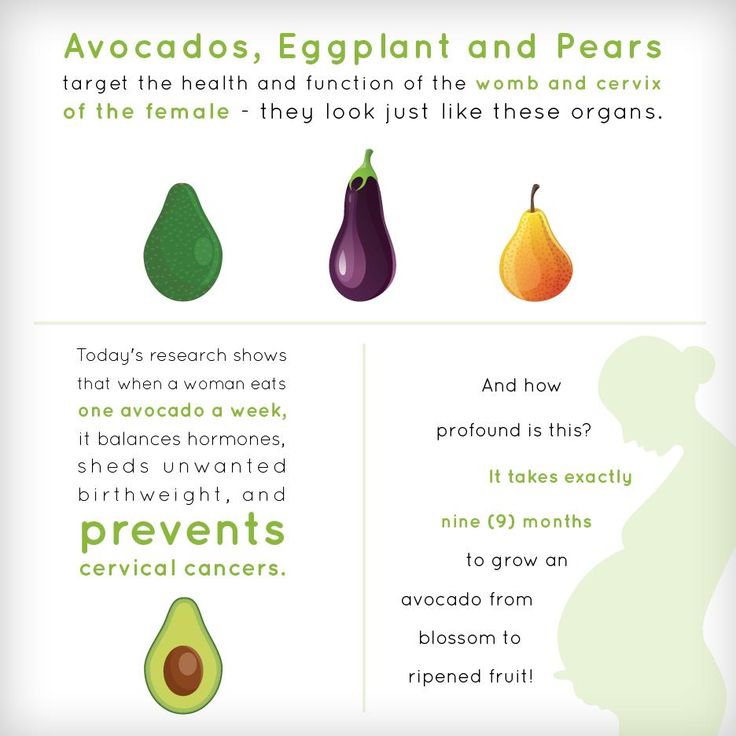 It is impossible to fully eliminate all risk of a baby or child choking on any liquid, puree, or food. We advise you to follow all safety protocols we suggest to create a safe eating environment and to make educated choices for your child regarding their specific needs. Never disregard professional medical advice or delay in seeking it because of something you have read or seen here.
It is impossible to fully eliminate all risk of a baby or child choking on any liquid, puree, or food. We advise you to follow all safety protocols we suggest to create a safe eating environment and to make educated choices for your child regarding their specific needs. Never disregard professional medical advice or delay in seeking it because of something you have read or seen here.
6 to 9 months old: For first-time eaters, you can offer large halves of avocado, large, thick spears of ripe avocado or mash the flesh and serve on a pre-loaded spoon. If the avocado spears are shooting out of baby’s hands because they’re slippery, roll the pieces in a nutritious food that adds grip: hemp seeds, shredded coconut, or even finely ground nuts that you have already introduced (nuts are a common food allergen). See our guacamole recipe!
9 to 12 months old: At this age, the pincer grasp (where the thumb and pointer finger meet) is developing, enabling baby to pick up smaller pieces of food.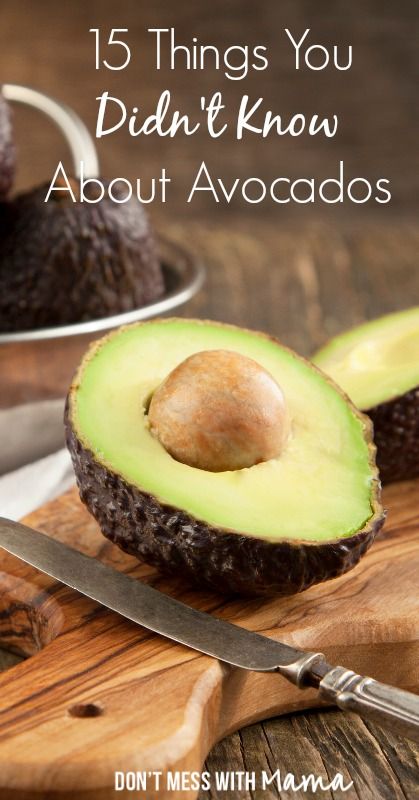 As such, this is a great time to move down in size to small, bite-size pieces of avocado. If it is a struggle to pick up small pieces of food, it’s absolutely fine to continue to offer large spears of avocado or to continue with mashed avocado.
As such, this is a great time to move down in size to small, bite-size pieces of avocado. If it is a struggle to pick up small pieces of food, it’s absolutely fine to continue to offer large spears of avocado or to continue with mashed avocado.
12 to 24 months old: At this age, toddlers are likely mastering the use of utensils. Serving half of an avocado in its skin and calling it an “avocado boat” can be a fun twist, though you can absolutely continue with small pieces of diced avocado or large spears as well. Anything goes!
Peeled avocado spearPieces of avocado rolled in hemp seedKnow what the best and worst foods are for babies starting solids with our First Foods Essentials intro kit.
Recipe: Guacamole
Serving Size: about 1 cup
Cooking Time: 5 minutes
Age: 6 months+
Ingredients
- 1 medium avocado
- 1 tablespoon (8 g) extra-virgin olive oil
- Juice of ½ lime (about 1 tablespoon / 15 g)
Directions
- In a large bowl, use a fork to mash the avocado until smooth.
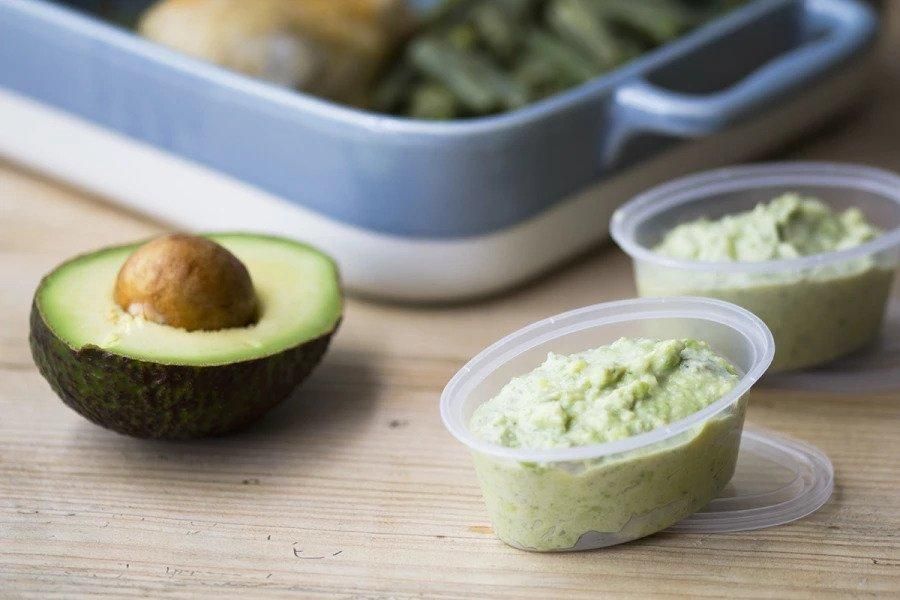
- Stir in olive oil and lime juice and stir to combine.
- Serve: Scoop the guacamole into a bowl and let the child self-feed by scooping with their hands. If you’d like to work on utensils, pass a pre-loaded spoon to the child in the air for them to grab from you.
To Store: Press plastic wrap tight over the top of the guacamole so that there is no air between the guacamole and the plastic wrap. Guacamole will keep in the refrigerator for 2 days.
How often should you offer solids? See our sample feeding schedules for babies of every age.
Flavor Pairings
Avocados are a great healthy fat with a pretty neutral flavor, making them quite versatile. They pair especially well with grilled or roasted chicken, pork, and tropical fruits like mango or pineapple.
Reviewed by
E. Cerda, MSN, CNS, LDN
A. Gilbaugh, RD, CNSC
K. Rappaport, OTR/L, MS, SCFES, IBCLC
K. Grenawitzke, OTD, OTR/L, SCFES, IBCLC, CNT
Grenawitzke, OTD, OTR/L, SCFES, IBCLC, CNT
S. Bajowala, MD, FAAAAI. (allergy section)
R. Ruiz, MD Board-Certified General Pediatrician and Pediatric Gastroenterologist
- Comerford, K. B., Ayoob, K. T., Murray, R. D., & Atkinson, S. A. (2016). The role of avocados in complementary and transitional feeding. Nutrients, 8(5). DOI: 10.3390/nu8050316. Retrieved April 16, 2021
- Avocados: Nutrient-Dense and Delicious. (n.d.). @berkeleywellness. Retrieved April 3, 2021
- Telez-Diaz, G., Ellis, M. H., Morales-Russo, F., & Heiner, D. C. (1995). Prevalence of avocado allergy among atopic patients. Allergy Proceedings: The Official Journal of Regional and State Allergy Societies, 16(5), 241–243. DOI: 10.2500/108854195778702594. Retrieved April 16, 2021
- Latex Allergy | AAAAI. (n.d.). The American Academy of Allergy, Asthma & Immunology. Retrieved April 2, 2021
- Levy, D. A., Mounedji, N., Noirot, C., & Leynadier, F.
 (2000). Allergic sensitization and clinical reactions to latex, food and pollen in adult patients. Clinical and Experimental Allergy: Journal of the British Society for Allergy and Clinical Immunology, 30(2), 270–275. DOI: 10.1046/j.1365-2222.2000.00751.x. Retrieved April 16, 2021
(2000). Allergic sensitization and clinical reactions to latex, food and pollen in adult patients. Clinical and Experimental Allergy: Journal of the British Society for Allergy and Clinical Immunology, 30(2), 270–275. DOI: 10.1046/j.1365-2222.2000.00751.x. Retrieved April 16, 2021 - Blackman AC, Anvari S, Davis CM, Anagnostou A. Emerging triggers of food protein-induced enterocolitis syndrome: Lessons from a pediatric cohort of 74 children in the United States. Ann Allergy Asthma Immunol. 2019 Apr;122(4):407-411. doi: 10.1016/j.anai.2019.01.022. Retrieved April 14, 2022
When babies can eat eggs and 4 other baby foods to introduce
Out with the old, in with the new! New parents may be curious about what to feed their babies — and when do it. When can babies eat eggs? Are avocados safe? How much should my baby eat?
White rice cereal is out, peanut butter oatmeal is in. Store-bought baby-food carrots are out, homemade organic kale puree is in. The list goes on and on.
Parents are also wary of packaged baby food after a report suggested some may contain dangerous levels of toxic metals.
But what foods can babies eat without worry? When making your own baby food, what should you serve? How do you know what to feed your 6-month-old?
Best food for babies
Here are my top five recommendations for what to feed your baby, and two foods to avoid.
Avocados
It’s not only trendy to start avocado as a first food; it’s also extremely healthy. Avocados are high in potassium, fiber, and healthy monounsaturated fats, which are good for hearts of all ages. You can puree or fork-mash a bit of avocado and offer your baby a small spoonful. Have the camera ready as you may get a funny face the first few times you offer it! Keep trying. She or he will eventually take to it. Around 8 or 9 months of age, diced pieces of avocado are fun for her to pick up, smash, and self-feed. My 1-year-old son loves pieces of avocado with scrambled eggs for breakfast.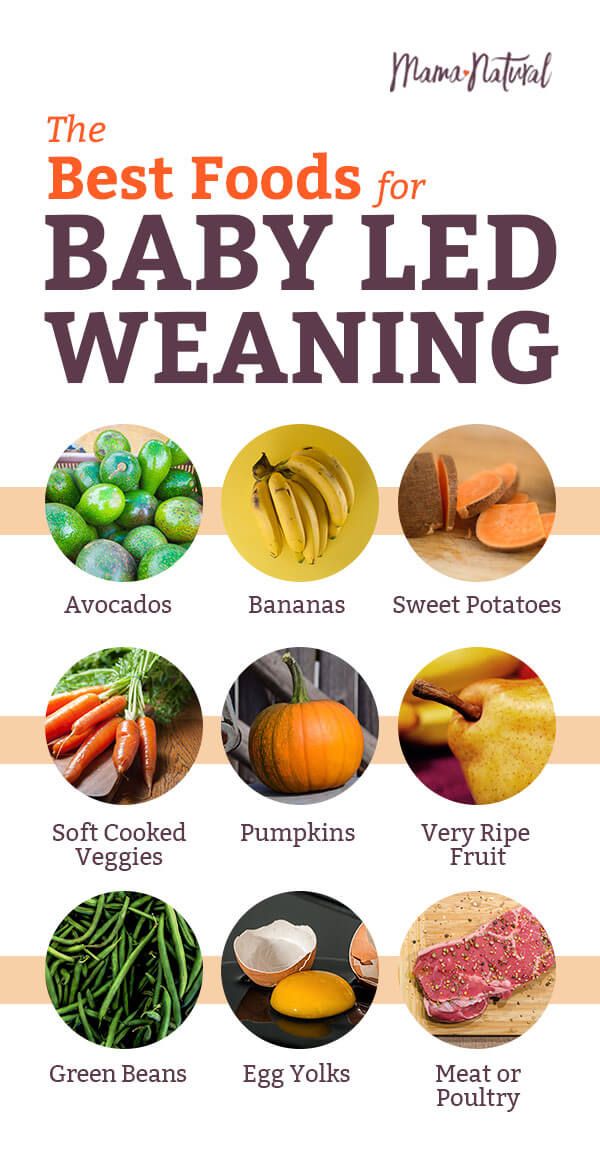
Fish
Many kids and adults dislike fish because they didn’t get used to eating it as an infant. The oils in fatty fish are high in omega-3 fatty acids, which are extremely valuable for brain and eye development, and infants are growing big, fatty brains! Fish is also a great natural source of protein and contains vitamin D—a vitamin that most kids need more of. Salmon is definitely the most important and healthiest fish to feed infants and toddlers. It’s also low in mercury (compared to other fish).
Remember to thoroughly cook all fish. It’s perfectly fine to lightly season it so your whole family can enjoy. Initially, puree then fork-mash for your baby. You can add a little moisture with water, breast milk, or organic chicken or vegetable broth, if needed. At 7 months, my son loved his salmon mixed with pureed sweet potatoes. As your infant begins self-feeding, just break the salmon into tiny pieces and let him self-feed. Be careful to ensure there are no hidden fish bones, as even a tiny bone can be a potentially dangerous choking hazard for an infant.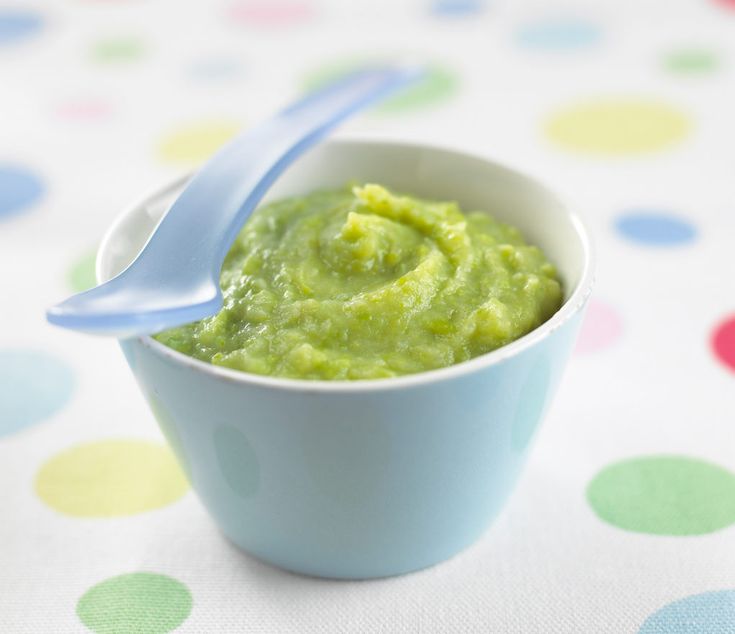
Nut butter
More and more research is demonstrating the importance of introducing nut products early and frequently to prevent nut allergies in children. One study showed that introducing peanut products as early as 4 to 6 months to high-risk infants dramatically decreased the chance that they would later develop a peanut allergy.
Please note: Parents should talk with their pediatricians about exactly when and how to give peanut products, experts say, especially if babies have eczema, which may put them at higher risk for developing a peanut allergy.
Once cleared, however, nut butters are delicious, healthy, and convenient. Nutrient-wise, they offer vegetarian protein, vitamin E, and healthy monounsaturated fats.
So, how exactly do you introduce peanut products to your 6-month-old? Consult with your pediatrician, first. If you get the go-ahead, peanut butter oatmeal is my favorite way. I like to melt one teaspoon of creamy peanut butter (choose one with only peanuts, no sugar!) into one ounce of baby whole-grain oatmeal, making sure the mixture isn’t too sticky and thick.
Around 8 months, you can start introducing creamy nut butter by itself, in an extremely thin layer, on either your finger or a spoon to lick off. Once your baby is self-feeding, you can spread a very thin layer on thinly sliced whole-grain bread, cut into tiny pieces, and observe as he picks them up and self-feeds. Sticky and fun!
Eggs
Eggs are a perfect single-ingredient food. Easy to prepare, they are a convenient and healthy source of protein, fat, and other nutrients such as biotin and iron, which are important for growth and a healthy body. Eggs are a top source of protein for children and are easy to make and serve. You can give your baby the entire egg (yolk and white), if your pediatrician recommends it.
Around 6 months, puree or mash one hard-boiled or scrambled egg and serve it to your baby. For a more liquid consistency, add breast milk or water. Around 8 months, scrambled egg pieces are a fantastic finger food. I even make a few ahead of time, keep them in the fridge and just reheat in the microwave for a fast and easy breakfast (or anytime) option for all ages.
Green Vegetables
Green veggies have almost every vitamin and mineral you can think of. People who eat green vegetables are linked with lower disease rates and a healthier weight. Calorie for calorie, leaf for leaf, deep dark greens such as kale, Swiss chard and spinach pack more nutrition than any other food.
Simply steam or boil, and then puree. Peas, green beans, zucchini, spinach, broccoli, and asparagus are especially easy to steam (or boil) and then puree, fork-mash or cut into tiny pieces. When you introduce green veggies around 6 months of age and continue offering them regularly, your infant will grow into a toddler and older child who loves green veggies and eats them often.
Foods to avoid giving babies
White rice cereal
For years white rice cereal was recommended as the first food for baby. But there’s little protein, no fiber, and no flavor, and it simply primes young palates for a lifetime of eating white carbs. Yes, it has iron and zinc, but we now know that meat is a better early source of iron for babies.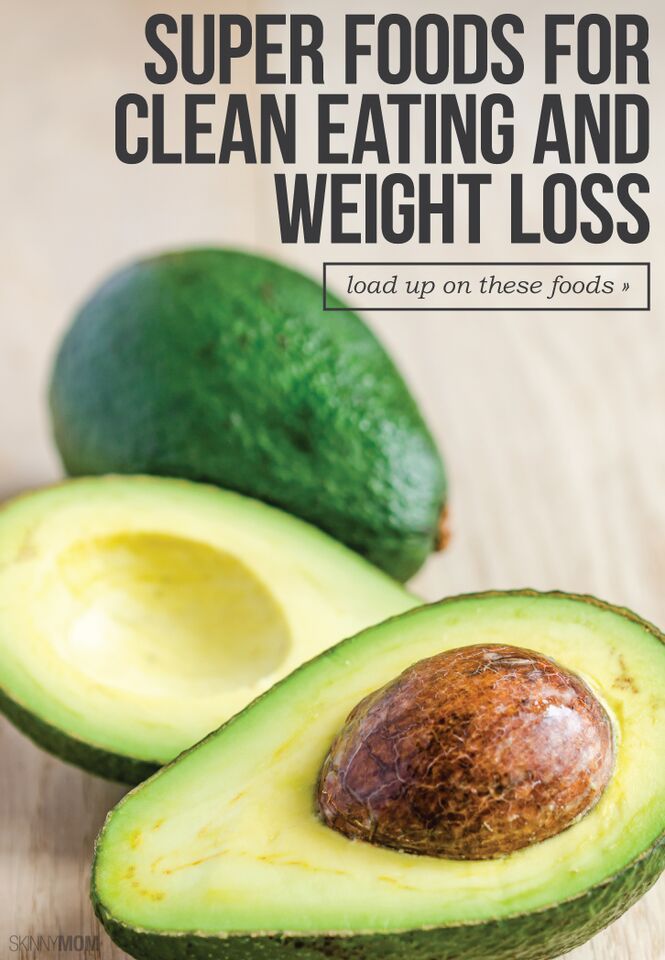 I’m recommending tossing the white rice cereal in favor of other whole foods as the first solid food that your baby tastes.
I’m recommending tossing the white rice cereal in favor of other whole foods as the first solid food that your baby tastes.
If you do choose to give your baby infant cereal, chose brown over white options: They are more nutritious, and they get your infant used to the taste of whole grains. Try brown rice, oatmeal (with peanut butter or fresh fruit) or quinoa.
Juice
During my residency at UCLA, one of the most common questions I was asked was, “When can I give my baby juice?”
Maybe it was a sign of the times or maybe it was the patient population, but my answer was always, “Never.” Even diluted juice only gets infants used to the taste of sweet beverages. And 100% fruit juice contains no fiber, so it's not a substitute for fresh whole fruit.
What’s a better beverage for infants to drink (other than breast milk and/or formula)? Water! Start your baby on sips of plain water around 6 months of age. Babies that drink water grow into toddlers and children who drink water. That’s a healthy habit for life!
That’s a healthy habit for life!
This story was originally published in 2016 and has been updated.
Avocado: is it possible for children to eat it - the expert answered
Avocado is a healthy and tasty product that everyone can and should eat, unless, of course, there is an allergy. The fruit goes well with fish, vegetables, salt, pepper, bread, and is also an ideal ingredient for healthy smoothies and desserts.
The founder of the largest Ukrainian-language group on Facebook about complementary foods, baby food expert Viktoriya Stelmakh, exclusively for FoodOboz, told whether children can eat avocados.
Can avocados be given to children under 6 months of age?
Video of the day
"Avocado is a great choice for a baby's first solid food. It's actually a great choice for anyone, but especially for babies. Avocado can be offered as soon as the baby is ready for solid foods - complementary foods, 6 months . Therefore, there is no reason why you cannot give your child an avocado," Victoria said.
Therefore, there is no reason why you cannot give your child an avocado," Victoria said.
The expert noted that avocados are indeed one of the best foods you can offer your baby from the very beginning of weaning!
"Ripe avocados are soft and nutritious, making them an excellent first food. For example, in the US, avocados are the TOP 1 food to start with. Most pediatricians around the world rank them #1 on their list. 10 Best Fruits for Babies because avocado nutrition is good for baby development,” the expert explained.
How to cook avocados for children?
"The avocado is a popular first food not only in the US for babies, but all over the world, and it's easy to see why. The fruit is easy to prepare rich in fiber and healthy fats that babies need to support digestion and brain development, zinc to support immune health. The healthy fats in avocados also make them a good option for making butter, which appropriately has a high smoke point - better for frying.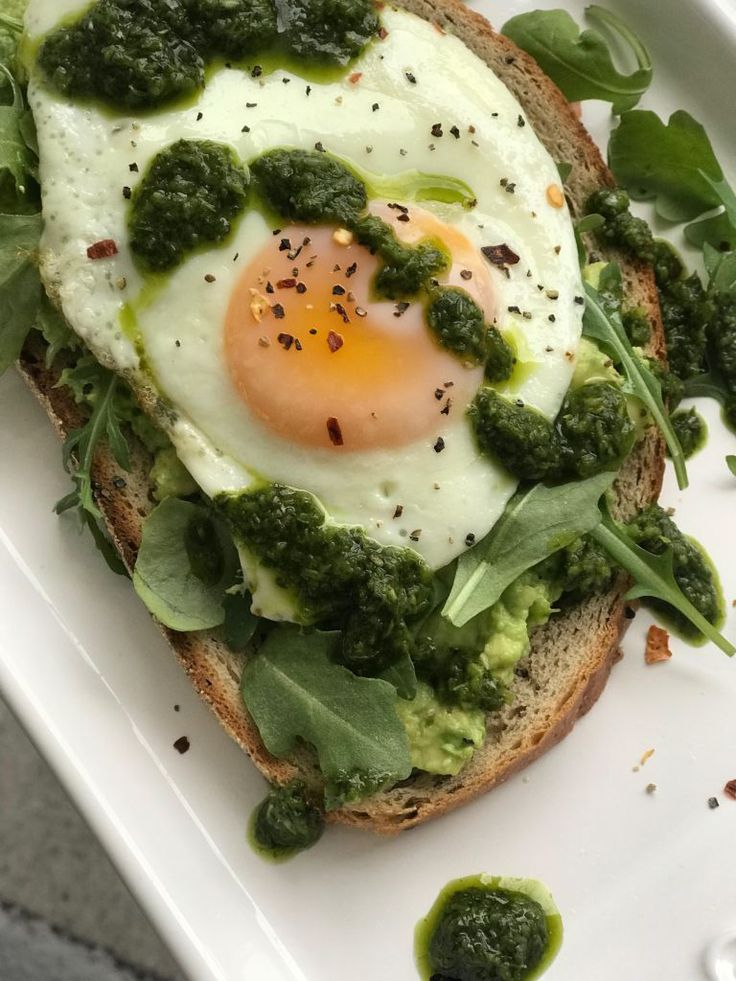 Contrary to what you may have heard, they do not contain a lot of protein, however, they are a rich source of poly- and monounsaturated fats, "said Victoria.
Contrary to what you may have heard, they do not contain a lot of protein, however, they are a rich source of poly- and monounsaturated fats, "said Victoria.
"Infants and young children require more fat, not only do they contribute to the normal development of the brain and nervous system, they also help their body absorb important vitamins such as A, D, E and K. This is one of the reasons why avocados are included in conditional list 10 foods for low weight babies recommended by many nutritionists and pediatricians If your child's pediatrician has ruled out medical causes of slow weight gain, such as heart or digestive problems, consider feeding babies high-calorie whole foods after 6 months. , which can promote healthy weight gain," Victoria explained.
The expert added that avocados are also included in the list of auxiliary products for children's constipation.
"That's because it's a source of both soluble and insoluble fiber, which can help relieve constipation. In addition, a 2019 study found that replacing carbohydrates with fat and fiber from avocados increased satiety. Another study found that children who regularly ate avocados were 9% less likely to become overweight or obese over a period of 4 to 11 years compared to those who did not consume avocados regularly," the expert said.
In addition, a 2019 study found that replacing carbohydrates with fat and fiber from avocados increased satiety. Another study found that children who regularly ate avocados were 9% less likely to become overweight or obese over a period of 4 to 11 years compared to those who did not consume avocados regularly," the expert said.
Health benefits for baby (MUFA):
- Infants require more fat in their diet than adults.
"Actually, 50% of their energy supply should come from fat (as opposed to 30% for adults), avocados are high in fat compared to other foods, so are great for giving your child more bang for your buck," Victoria explained.
- avocados are high in oleic acid, a type of healthy fat from the group of monounsaturated fats (omega-9).
"It is also the main type of fat in breast milk. Oleic acid is important for the growth and development of the nervous system and brain. It is best known for its role in reducing the risk of heart disease and reducing inflammation in the body," the expert said.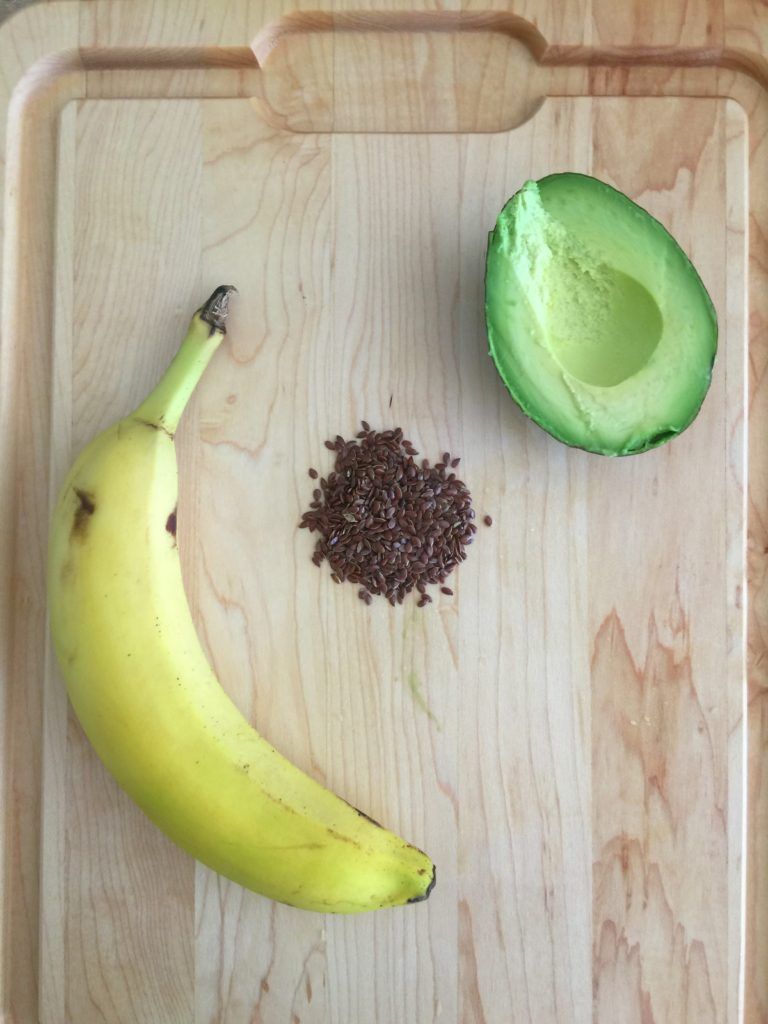
- Avocado's fat content also helps your child absorb fat-soluble vitamins A, D, E and K and phytonutrients more efficiently.
- In addition to monounsaturated fats, avocados also contain some polyunsaturated fats (omega-6) and a few saturated fats.
"In general, this is a really nutritious food that should be included in your child's diet," summed up Victoria.
How to choose an avocado?
Avocado is not a canned baby food, so store fresh avocado is best.
Avocado is not on the list of dangerous foods for children with a high risk of choking .
When an avocado ripens, it has a very soft, creamy texture, although in theory a person can choke on any food - even water. All you need to do is make sure you create a safe eating environment, serve the product in a safe serving way, and stay within arm's reach of your child while eating.
How common is avocado allergy in children?
Avocado allergy is rare because avocado is not on the list of allergens and allergy to it is not common, it is more individual and cross-reactions.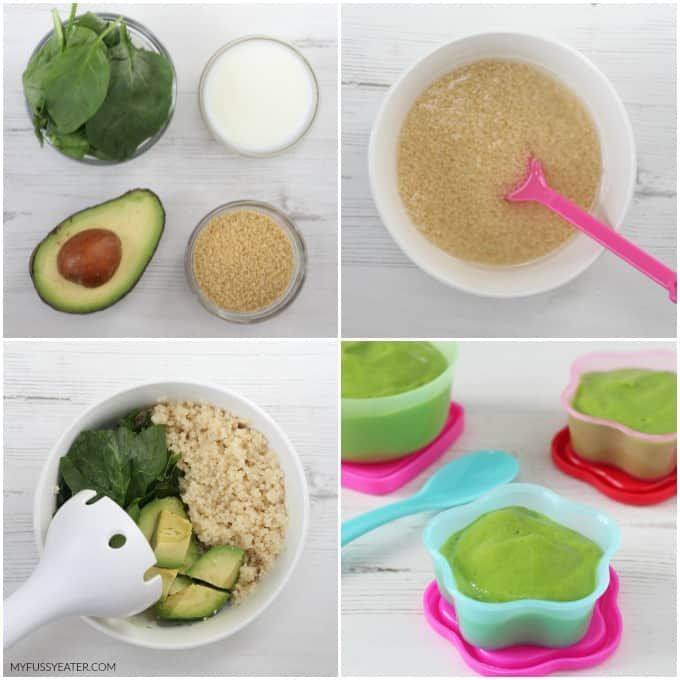 Avocado allergies are more common in people who are already allergic to bananas, chestnuts, or kiwis, and those who are allergic to latex or certain types of pollen may be allergic to avocados or suffer from oral allergy syndrome . Oral Allergy Syndrome usually results in a transient itching or burning sensation in the mouth and is unlikely to lead to a dangerous reaction,” the expert explained. You can simply cut an avocado in half, pull out the big ankle in the middle, and then scoop up the green avocado fruit with a spoon. A good avocado has the consistency of butter. If you have chosen mashed baby food, you can mash it with a fork, or use a blender. If your child is on self-feeding (BLV), then cut it into safe slices - slices, make notches on it. Or cut it with a curly knife so that it is convenient for the child to take it with the handles, "said Victoria.
Avocado allergies are more common in people who are already allergic to bananas, chestnuts, or kiwis, and those who are allergic to latex or certain types of pollen may be allergic to avocados or suffer from oral allergy syndrome . Oral Allergy Syndrome usually results in a transient itching or burning sensation in the mouth and is unlikely to lead to a dangerous reaction,” the expert explained. You can simply cut an avocado in half, pull out the big ankle in the middle, and then scoop up the green avocado fruit with a spoon. A good avocado has the consistency of butter. If you have chosen mashed baby food, you can mash it with a fork, or use a blender. If your child is on self-feeding (BLV), then cut it into safe slices - slices, make notches on it. Or cut it with a curly knife so that it is convenient for the child to take it with the handles, "said Victoria.
Avocados are best given to children in small portions
"As with any new food for a child, start with a small amount for the first few servings. If there is no adverse reaction, gradually increase the amount at subsequent meals," the specialist explained.
If there is no adverse reaction, gradually increase the amount at subsequent meals," the specialist explained.
Victoria added that the main changes occur in the nutrition of infants and toddlers during the first two years of life. Exposure to certain foods and nutrients in the first two years may affect their future health through metabolic programming or the development of specific tastes.
Infants and toddlers should be offered nutritionally and physico-chemically ideal complementary and transitional foods on a regular basis to ensure their optimal health and enhance their taste preferences and perceptions of nutrient-dense dietary options.
"The avocado is unique among complementary foods and baby food," the expert concluded.
at what age can it be given?
Child's birthday » Baby food » At what age can avocado be given to a child?
06/21/2016
Contents
- 1 What causes controversy in the scientific community
- 2 Avocados for the first complementary foods
- 3 How should an avocado look like?
- 4 How to choose a healthy avocado?
- 5 Storage conditions
- 6 Contraindications
- 7 Video: Feeding a baby from 4 months
The positive properties of avocados are in a large number of useful substances contained in it. This is a whole complex of vitamins and minerals. Useful for digestion is the fruit fiber of a ripe avocado grated into gruel. It should be noted that its calorie content is very high - 20Kk per 100 grams of product.
This is a whole complex of vitamins and minerals. Useful for digestion is the fruit fiber of a ripe avocado grated into gruel. It should be noted that its calorie content is very high - 20Kk per 100 grams of product.
What causes controversy in the scientific community
Avocado is one of the healthiest foodsThis fruit is often prescribed for adults to lower cholesterol. For a week of systematic intake, indicators in adults decrease by 30%. The crumbs cannot have such problems with cholesterol, as well as cataracts. In addition to preventing all age-related changes, avocados prevent the development of cancer cells.
Nutritional value and chemical composition of avocadoFor children, this fruit is useful because the microelements contained in it contribute to the development of physical and mental. Scientists argue about the age at which avocados can be given to children. And this is in America, where this fruit has long been an integral part of the diet.
For Russia, avocado is an exotic product, which once again speaks against it.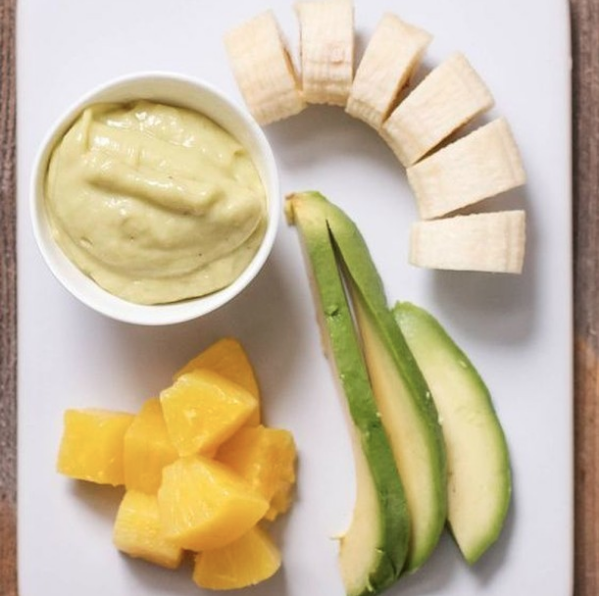 It has always been believed that vegetables and fruits that grow in the region where a person lives bring the greatest benefit.
It has always been believed that vegetables and fruits that grow in the region where a person lives bring the greatest benefit.
Given that the avocado is also a strong aphrodisiac, the need for its introduction into the children's diet remains questionable.
Avocado First Food
The delicate texture of the first fruit food is easier for the baby to digest than pureed vegetables and herbs. A more subtle unobtrusive taste also speaks in favor of fruit rather than vegetable complementary foods. But is it so important to give all the vitamins and minerals at once when you can please your child with a variety of flavors of fruits and vegetables that are less high in calories and do not contain "adult" vitamins. For example, "Omega-3" may be an extra addition to the mandatory vitamin "D" complex for babies.
Despite the variety of avocado recipes for children, it is better to consult a doctor. When introducing avocados into baby food, consult your doctor. Advice on the age at which to give avocados is mixed.
Advice on the age at which to give avocados is mixed.
Some scientists are of the opinion that this fruit should not be given to children under 1 year old. Others recommend it as the first complementary food. Here again, the exact age cannot be named, because the first complementary foods for breastfed children are recommended to be introduced no earlier than the baby is 6 months old.
The stomach of a bottle-fed baby is ready to accept tender fruit pulp from 3-4 months. As a rule, for 3-month-old children, applesauce becomes the first complementary food. Avocado has a delicate texture similar to an apple. Its taste is not bright, which can be a good addition to milk. But still, you can enter it a month after the first apple food and banana samples.
What should an avocado look like?
With the appearance of avocados, not everything is clear due to the large number of its varieties. On Russian shelves, you can most often find 4 varieties out of 400 - these are:
Avocado varieties- "Gwen" - the fruits of this variety are oblong and rather large.
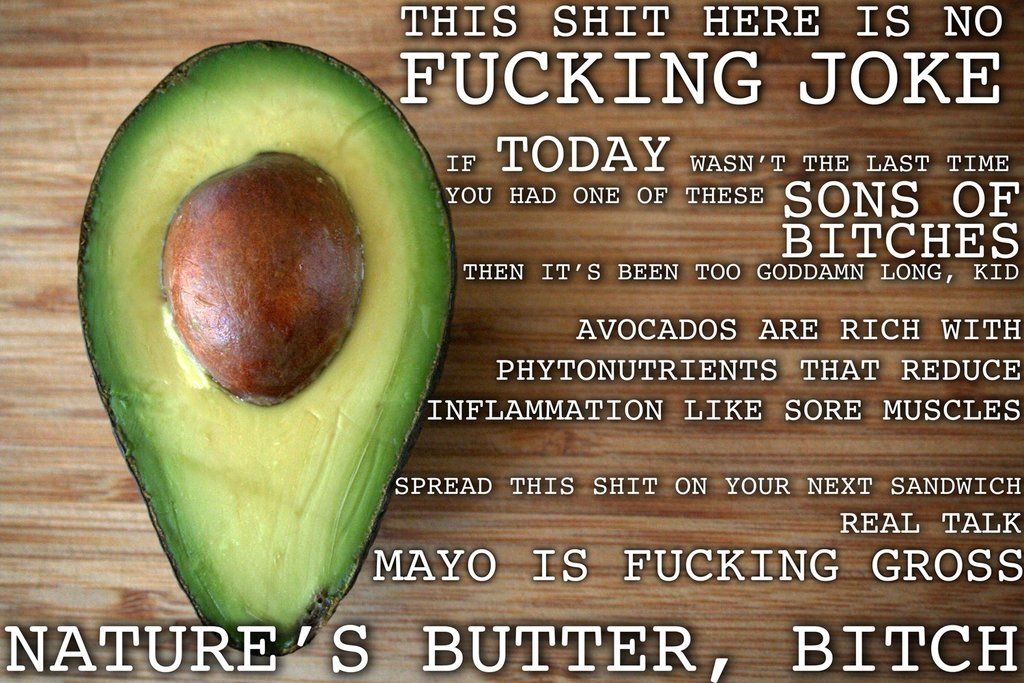 Their skin is deep green. The flesh is yellow-green. The closer to the bone, the more yellow.
Their skin is deep green. The flesh is yellow-green. The closer to the bone, the more yellow. - "Reed" also applies to large-fruited varieties. The shape of the fruit is round, the flesh is light yellow, covered with a thick pimply skin of dark green color.
- Sweetish pulp under a smooth green skin is hidden in large fruits of the Fuerte variety.
- The most common pear-shaped fruits of medium size are the fruits of the Zutano variety. The flesh of the fruit is often white, sometimes yellowish. The smooth skin is easy to peel off.
There are a lot of varieties, so it is difficult to distinguish which of the fruits is ripe and which is not by the appearance of the peel. The main thing is that the peel is green, not purple. For some varieties, the brown color of the fruit peel is acceptable.
How to choose a healthy avocado?
"Maturity" avocado When choosing an exotic fruit, you can trust your hands and ears. The first step is to touch the fruit: if it is too hard and when pressed with your fingers, its shape remains unchanged, it is not ripe. The soft fruit of the avocado belongs to the category of overripe. There is a high possibility that under a dense peel the process of decay or fermentation has already begun. It is necessary to choose the golden mean. An obligatory criterion when checking the fruit is the restoration of its original shape after pressing. There should be no dents on the peel.
The soft fruit of the avocado belongs to the category of overripe. There is a high possibility that under a dense peel the process of decay or fermentation has already begun. It is necessary to choose the golden mean. An obligatory criterion when checking the fruit is the restoration of its original shape after pressing. There should be no dents on the peel.
It's even easier to tell when an avocado is ripe by ear. When shaking it, the stone should make a sound of hitting the shell. If this does not happen, the fruit is not ripe, the grain in the stone fits snugly.
When choosing between unripe and overripe avocados, it is better to give preference to the first. After a couple of days of lying, he will reach the required condition, like a pear.
Storage conditions
Avocados are best stored at room temperature Store at room temperature. You can’t put it in a freezer or refrigerator - this fruit does not tolerate sub-zero temperatures, it deteriorates very quickly if stored improperly.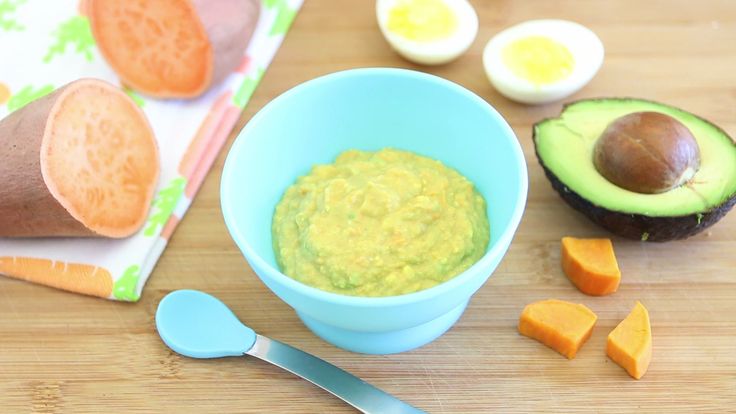 Like all fruits, it must be eaten fresh, only then it will give the maximum benefit to the body and will not cause harm.
Like all fruits, it must be eaten fresh, only then it will give the maximum benefit to the body and will not cause harm.
Contraindications
Possible cross-reactions are detected in the diagnosis of allergiesThe worst thing to give avocados to children suffering from latex allergies. At first glance, latex and fruit are unrelated. Upon a detailed study of the problem, it turned out that intolerance to bananas, apples, cherries, papaya, melons, tomatoes can subsequently affect cross-allergy. This will lead to severe forms of dermatitis on skin contact with latex products.
The threat of avocados is that latex proteins from the sap of euphorbia and mulberry trees are similar to those found in avocados. Latex products, which include nipples and pacifiers, with such a disease, will provoke the production of IgE. This type of immunoglobulin leads to the clinical manifestations of an allergic reaction.
In order not to condemn the child to suffering, it is necessary to consult a doctor before introducing exotic complementary foods.
